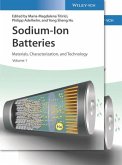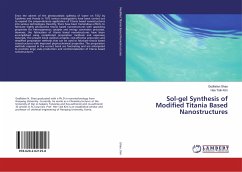Amorphous self-assembled titania nanotube layers are fabricated by anodization in ethylene glycol based baths. The nanotubes having diameters between 70-130 nm and lengths between 4.5-17 µm are assembled in Na-ion test cells. Their sodium insertion properties and electrochemical behavior with respect to sodium insertion is studied by galvanostatic cycling with potential limitation and cyclic voltammetry. These titania nanotubes-based electrodes presented excellent cycling stability and high rate capability. Furthermore, stable cycling performance can be shown for 300 cycles without significant capacity fade. These results combined with the intrinsic advantages of titania such as high abundance, non-toxicity and low costs as well as the simple fabrication technique point towards the good prospects of using anodic titania nanotubes in Na-ion batteries.
Bitte wählen Sie Ihr Anliegen aus.
Rechnungen
Retourenschein anfordern
Bestellstatus
Storno








